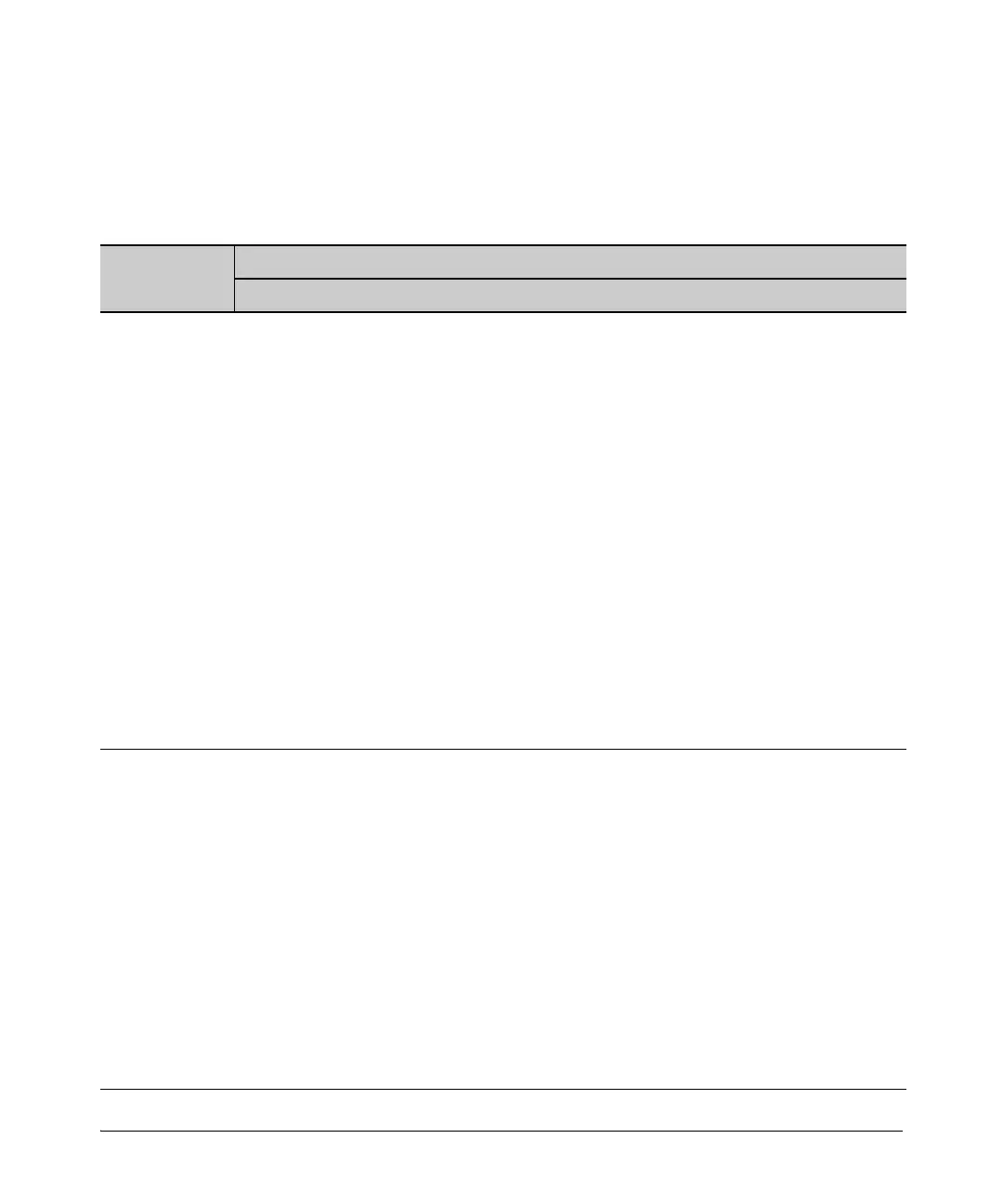5-52
Quality of Service: Managing Bandwidth More Effectively
Globally-Configured QoS
Comparison of Global IP Type-of-Service Classifiers
Table 5-9 shows the difference in how global IP-Precedence and IP-Diffserv
classifiers are implemented in the switch.
Table 5-9. IP Type-of-Service Classifiers
Outbound Port IP Type-of-Service Classifiers
IP-Precedence Mode IP Differentiated Services Mode
IP Packet Sent Out
an Untagged Port
in a VLAN
Based on the IP Precedence bit set in
a packet’s ToS/Traffic Class field, the
packet is sent to one of eight
outbound port queues in the switch:
1 - 2 = low priority (queue 1, 2)
0 - 3 = normal priority (queue 3, 4)
4 - 5 = medium priority (queue 5, 6)
6 - 7 = high priority (queue 7, 8)
Based on the DSCP codepoint that the switch has been config-
ured to detect, one of the following actions is taken:
• The codepoint is re-marked according to the configured
DSCP policy and the 802.1p priority currently configured for
the codepoint in the DSCP Policy table (Table 5-8).
• The codepoint is not changed, but the 802.1p priority is
marked with the currently configured value for the
codepoint in the DSCP Policy table.
Based on the new 802.1p priority marking, the packet leaves
the switch through one of the following queues:
1 - 2 = low priority (queue 1, 2)
0 - 3 = normal priority (queue 3, 4)
4 - 5 = medium priority (queue 5, 6)
6 - 7 = high priority (queue 7, 8)
If No-override (the default) is configured for the 802.1p priority
associated with a codepoint, the priority in the packet header
is not re-marked by the global IP-Diffserv classifier and, by
default, is sent to the “normal priority” outbound port queue.
IP Packet Sent Out
a Tagged Port in a
VLAN
Based on the IP Precedence bit set in
a packet’s ToS/Traffic Class field:
• The packet is sent to one of eight
outbound port queues in the
switch as described above.
• The IP Precedence value (0 - 7) is
used to set the corresponding
802.1p priority in the VLAN tag
carried by the packet to the next
downstream device (see Table 5-
8).
Based on the DSCP codepoint that the switch has been config-
ured to detect, one of the following actions is taken:
• The codepoint is re-marked according to the configured
DSCP policy and the 802.1p priority currently configured for
the codepoint in the DSCP Policy Table (Table 5-8).
• The codepoint is not changed, but the 802.1p priority is
marked with the currently configured value for the
codepoint in the DSCP Policy Table (Table 5-8).
Based on the new 802.1p priority marking, the packet leaves
the switch through one of the outbound port queues described
above.
In addition, the priority value (0 - 7) is used to set the 802.1p
priority in the VLAN tag carried by the packet to the next
downstream device. If the priority is configured as No-over-
ride in the DSCP Policy table, the VLAN tag carries a “0”
(normal priority) 802.1p setting if not prioritized by other global
QoS classifiers.
